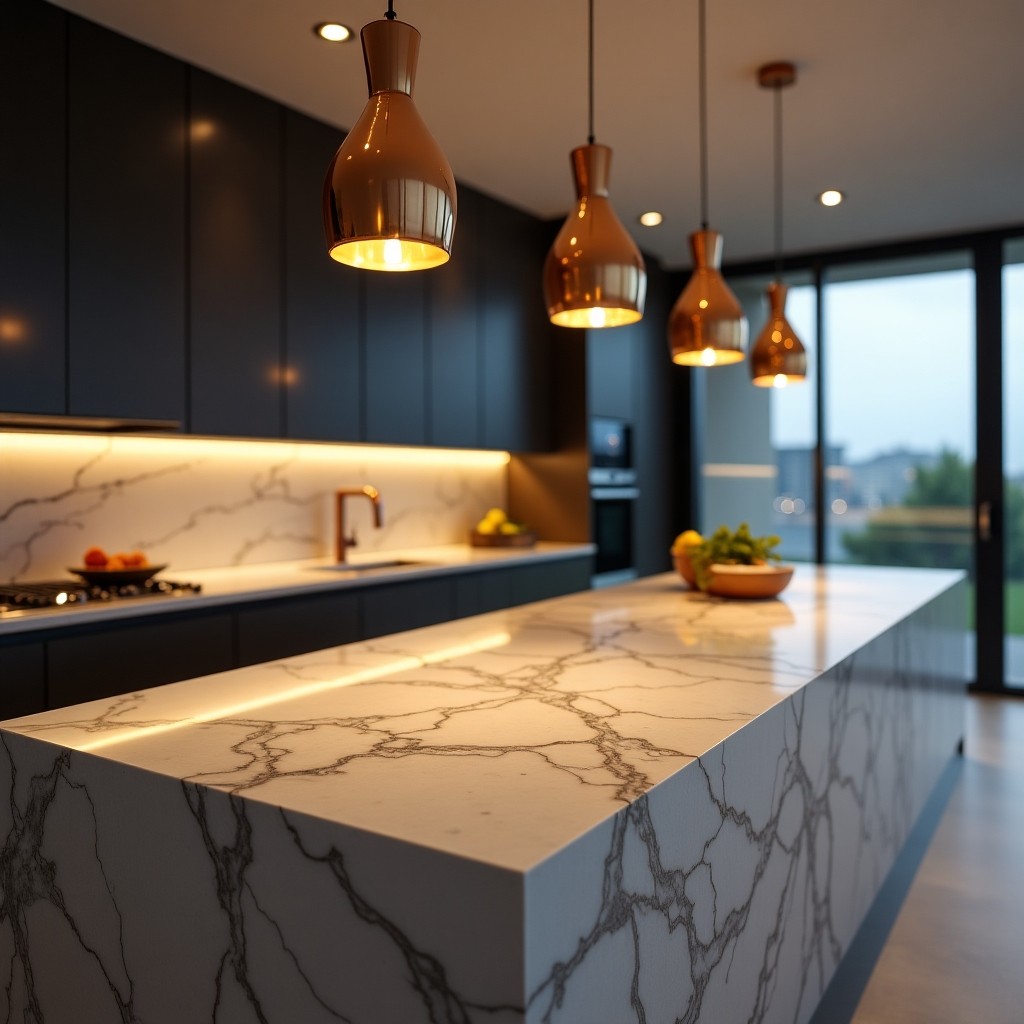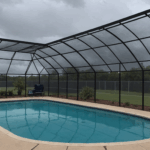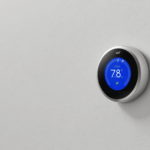In today’s competitive real estate market, enhancing your home’s value through strategic interior upgrades is increasingly important. Among the most impactful rooms where remodeling can significantly boost home value is the kitchen. As the heart of the home, the kitchen plays a pivotal role not only in everyday living but also in influencing potential buyers’ perceptions and the overall market value of your house.
Kitchen upgrades are not just about aesthetics; they blend functionality, efficiency, and style, making the space more appealing and user-friendly. In fact, the National Association of Realtors indicates that a well-executed kitchen remodel can return around 59-79% of its cost in added home value. This statistic underscores the importance of prioritizing kitchen improvements, especially if you’re considering putting your home on the market in the near future.
When planning kitchen upgrades, it’s essential to focus on key elements that maximize both utility and appeal. Start with the cabinetry, which forms the backbone of kitchen storage solutions. High-quality cabinets not only enhance storage capacity but also elevate the kitchen’s overall aesthetic. Consider materials like solid wood for a timeless appeal or explore custom solutions that maximize every inch of space.
The choice of countertops also plays a critical role in the kitchen’s appeal. Durable and attractive materials such as granite, quartz, or marble can add a luxurious touch, providing a pristine surface that’s both functional and visually pleasing. For those on a budget, laminate countertops are a versatile option, offering a wide range of colors and patterns to simulate more expensive materials.
Appliances should not be overlooked when remodeling a kitchen. Modern, energy-efficient models not only improve the functionality of the space but can also significantly reduce utility bills. Features such as induction cooktops and convection ovens are popular choices that enhance cooking efficiency and safety. Stainless steel models are particularly favored by buyers, as they offer a sleek and modern aesthetic.
Lighting is another critical component of a successful kitchen remodel. Well-planned lighting schemes can transform a space entirely. Consider a mix of ambient, task, and accent lighting to create a warm, inviting atmosphere. Pendant lights over an island or under-cabinet lighting can add functional elegance, highlighting key areas and enhancing the personalized feel of the kitchen.
Don’t underestimate the importance of flooring when considering a kitchen upgrade. Durable, easy-to-clean options such as ceramic tiles, vinyl, or engineered hardwood can provide a solid foundation that complements other design elements. Ensuring the flooring is cohesive with the adjacent areas will also enhance the home’s overall flow and value.
It’s crucial to remember that the most valuable kitchen remodels are those that balance personal style with broad appeal. While you may have a specific design in mind, it’s wise to consider features and styles that are widely appreciated. This will not only make your kitchen more functional and attractive but also ensure it adds maximum value to your home when it’s time to sell.
Bathroom renovations
When considering which interior upgrades can significantly enhance your home’s value, bathroom renovations often rank high on the list due to their potential for a substantial return on investment. A well-executed bathroom remodel can transform an outdated or inefficient space into a luxurious retreat, increasing your home’s appeal and market value. This is particularly enticing for potential buyers who often prioritize updated bathrooms when searching for a new home.
One of the key areas to focus on during a bathroom remodel is the shower and tub. Upgrading to a modern, spacious shower with glass doors can create a sense of elegance and sophistication. Walk-in showers with high-end fixtures, such as rain showerheads and multiple body sprays, are highly desirable and can dramatically enhance the user experience. Similarly, adding a freestanding tub can serve as a stunning centerpiece, providing both visual appeal and a relaxing oasis for unwinding.
Vanities are another critical component of a successful bathroom renovation. Consider upgrading to a double-sink vanity to increase the functionality of the space, particularly in shared bathrooms. Choose high-quality materials like stone or quartz for the countertop to provide durability and a touch of class. In addition, ample storage solutions, such as built-in cabinets or stylish open shelving, contribute to both the functionality and attractiveness of the room.
Equally important is the choice of flooring and tile. Durable, moisture-resistant materials such as porcelain or ceramic tile are ideal for bathroom environments. Opt for neutral tones and classic patterns that can stand the test of time. Heated floors, while more of an investment, can add considerable luxury and appeal, especially in colder climates.
Lighting plays a crucial role in bathroom design, significantly affecting the ambiance of the space. Layered lighting, including overhead fixtures, wall-mounted sconces, and under-cabinet lighting, can create a warm and inviting atmosphere. LED lights are a smart choice for their energy efficiency and long-lasting performance.
Fresh paint can make a surprising difference in transforming the bathroom. Light, neutral colors tend to make the space feel larger and more open. Accents, such as a bold-colored wall or decorative tiles, can add personality without overwhelming potential buyers.
To further enhance the value of your bathroom remodel, consider incorporating energy-efficient upgrades. Water-saving fixtures, such as low-flow toilets and faucets, help conserve water and complement eco-friendly lifestyles, appealing to an increasing number of sustainability-conscious buyers.
- Investing in high-quality shower and tub upgrades can substantially boost your home’s value and buyer appeal.
- Double-sink vanities and ample storage solutions enhance functionality and attractiveness in any bathroom.
- Durable flooring choices, like porcelain tile, paired with modern designs, can create a lasting impression.
- Well-planned lighting schemes can transform the atmosphere and increase the overall appeal of the bathroom space.
- Incorporating water-saving fixtures supports sustainability and adds value by lowering future utility costs.
Basement finishing
Finishing your basement can be a rewarding project that enhances your living space and increases your home value. However, approaching this task without proper planning and understanding can lead to common pitfalls. It’s crucial to navigate these challenges adeptly to ensure a successful remodel that maximizes both functionality and return on investment.
One frequent mistake homeowners make is neglecting proper moisture control before starting the renovation. Basements are inherently prone to dampness due to their below-ground location. This moisture can lead to severe issues, such as mold growth and structural damage, which not only affect the finished product but also your health and safety. To avoid this, thoroughly inspect and address any water intrusion issues before beginning the finishing process. Installing a sump pump, sealing foundation cracks, and applying a quality waterproofing membrane are critical steps to ensure a dry and stable environment.
Another common error is poor space planning. Basements often consist of oddly shaped areas with low ceilings and limited natural light, which can present significant design challenges. Plan the layout carefully to optimize the available space. Consider the functionality of each area, keeping in mind possible uses such as a family room, home office, or guest suite. Emphasize an open layout that enhances air flow and light distribution. Additionally, ensure compliance with local building codes, specifically regarding egress windows and ventilation standards in case of an emergency.
Inadequate lighting is another issue that can detract from a basement’s usability and ambiance. Many homeowners settle for a few overhead lights, resulting in a dark, uninviting space. To counter this, incorporate a layered lighting strategy that includes ambient, task, and accent lighting. Recessed lighting fixtures are ideal for low ceilings, while wall sconces and floor lamps can add warmth and visual interest. If possible, consider adding larger windows or light wells to introduce natural light, which can dramatically brighten the space and make it more appealing.
Skipping insulation and soundproofing is another common oversight. Basements, being below ground, can be subject to temperature fluctuations that lead to discomfort. Proper insulation not only improves energy efficiency but also enhances the livability of the space. Soundproofing is equally important, particularly if the basement will serve as an entertainment room or suite. Adding soundproofing materials to walls and ceilings will reduce noise transmission, which is beneficial for both basement users and the rest of the household.
Selecting inappropriate materials is another pitfall. The basement environment calls for specific materials that can withstand potential moisture and temperature changes. When finishing your basement, choose water-resistant materials for flooring and walls. Vinyl, laminate, and tile are excellent choices for flooring, while mold-resistant drywall is advisable for walls. These materials are not only durable but also contribute to a polished aesthetic that enhances the overall appeal and value of your home.
Finally, underestimate the project’s cost and time requirements can lead to poor quality finishes and unnecessary stress. A detailed budget and timeline are crucial to avoiding overspending and excessive delays. Include a contingency fund for addressing unforeseen issues such as hidden mold or structural repairs. Working with experienced contractors and designers can also provide valuable expertise, helping you to avoid costly mistakes and achieve a high-quality finished product.
By planning meticulously and prioritizing quality, your basement remodel can transform an often-overlooked area into a versatile and valuable extension of your home. Not only will this improve your daily living experience, but it also typically yields a significant return on investment, boosting your home’s market appeal and value in the long run.
Open floor plans
Expanding your home into an open floor plan offers a transformative effect not just in terms of aesthetics but also in enhancing its market value. This design trend reallocates space by removing barriers like walls, creating expansive, fluid areas that appeal to modern sensibilities and potential buyers alike. Open floor plans encourage social interaction, offering an ideal setting for entertainment while simultaneously making homes appear larger and more inviting, significantly impacting perceived home value.
When transitioning to an open floor plan, the removal of non-load-bearing walls can seamlessly connect the kitchen, dining, and living areas, boosting the spaciousness and versatility of your home. This integration improves traffic flow and allows for multifunctional uses, such as a combined dining and living space. It’s crucial, however, to engage a structural engineer or experienced contractor to determine which walls can safely be removed without compromising the integrity of your home.
An open floor plan also demands careful attention to flooring and cohesive design elements that create a continuous visual flow throughout the connected spaces. Choosing uniform flooring material such as hardwood or luxury vinyl planks can unify the areas, enhancing the sense of openness and providing visual harmony. In addition, employing consistent color palettes and textures across the space ensures a seamless integration that appeals to both personal tastes and potential buyers.
Lighting is indispensable in accentuating an open floor plan. Natural light is a powerful ally, so maximize it by incorporating large windows, skylights, or glass doors. Pair this with strategically placed artificial lighting, such as recessed lights or elegant pendant fixtures to delineate different zones without physical barriers. For instance, pendant lights over the kitchen island can define the cooking area from the sitting areas, adding both functionality and style.
Moreover, furniture arrangement plays a vital role in the success of an open floor layout. Use furniture to subtly demarcate spaces within the open area, creating distinct yet harmonious zones. A strategically positioned sofa can separate the living area from the dining space while maintaining the openness. Carefully chosen rugs, accent walls, or bookcases can further define certain areas while maintaining the open concept.
To conclude this section, transitioning to an open floor plan is not only about knocking down walls but about creating a harmonious, functional environment that enhances both your lifestyle and your home’s value. By thoughtfully balancing structural, aesthetic, and functional considerations, you can create a space that is not only in tune with contemporary design trends but also adds significant appeal to your home.
Remember, the key to maximizing your home’s value with an open floor plan lies in adept planning and execution. With deliberate design choices and skilled craftsmanship, your interior upgrades can transform your home into an interconnected, inviting haven that rises above the ordinary. Embrace the freedom of open space and the soaring appeal it brings—not only for today’s enjoyment but also for a rewarding return on investment in the future.
Energy-efficient improvements
Investing in energy-efficient improvements is a strategic approach to enhancing your home’s value while reducing utility costs and environmental impact. As awareness of climate change and energy consumption grows, so does the demand for homes that incorporate sustainable technologies. Upgrading your home with energy-efficient improvements not only contributes to cost savings but also positions your property as an appealing option for eco-conscious buyers in the competitive real estate market.
One of the most effective ways to increase energy efficiency is by upgrading to high-performance windows. Double or triple-pane windows with gas fill and low-emissivity (Low-E) coatings provide superior insulation, reducing heat loss during winter and minimizing heat gain in summer. These modern windows enhance the comfort of your interior spaces while slashing heating and cooling costs. Additionally, energy-efficient windows can significantly boost your home’s resale value, giving it a competitive edge.
Insulation is another critical element in creating an energy-efficient home. Upgrading wall, attic, and basement insulation helps maintain a consistent indoor temperature, thereby maximizing HVAC efficiency and reducing energy costs. High-quality insulation materials, such as spray foam or cellulose, offer excellent thermal resistance and can dramatically improve the overall energy performance of your home. Not only does this step save money on energy bills, but it also contributes positively to the property’s market value by enhancing comfort and energy conservation.
Incorporating smart home technology is also an essential component of modern energy-efficient upgrades. Installing programmable thermostats, smart lighting systems, and energy-efficient appliances allows for precise control over energy use. These systems adapt to your lifestyle, optimizing energy usage by adjusting settings automatically based on your habits and preferences. This level of convenience and efficiency appeals strongly to prospective buyers, adding significant value to your home in their eyes.
Finally, consider upgrading your HVAC system to an energy-efficient model. Newer systems, such as heat pumps or high-efficiency furnaces and air conditioners, offer superior performance with reduced energy consumption. These modern systems provide reliable climate control while contributing to lower monthly energy bills. By advertising these state-of-the-art features, homeowners can attract interest from buyers seeking eco-friendly and energy-conscious living options.
In summary, energy-efficient improvements are a forward-thinking component of any interior remodeling project. These upgrades not only reduce the carbon footprint and energy expenses but also enhance the appeal and market value of your home. By investing in energy-efficient windows, superior insulation, smart home technologies, and modern HVAC systems, homeowners can ensure a positive return on investment while contributing positively to the environment.
- What are the most beneficial energy-efficient upgrades for my home?
- Some of the most beneficial energy-efficient upgrades include installing high-performance windows, adding enhanced insulation to walls and attics, upgrading to energy-efficient HVAC systems, and incorporating smart home technologies like programmable thermostats and energy-efficient appliances.
- How do energy-efficient improvements increase home value?
- Energy-efficient improvements increase home value by reducing utility costs, improving the overall environmental efficiency of the home, and making the property more appealing to eco-conscious buyers. They are seen as long-term investments that improve both comfort and sustainability.
- Are there any financial incentives or rebates for making energy-efficient upgrades?
- Yes, many governments and utility companies offer financial incentives, rebates, or tax credits for homeowners who make energy-efficient upgrades. These programs are designed to encourage energy conservation and can significantly offset the initial costs of such improvements.
- How can I determine which energy-efficient upgrades are right for my home?
- Conducting an energy audit is an excellent way to determine which upgrades will be most beneficial for your home. An energy auditor can identify areas of inefficiency and recommend specific improvements that will enhance energy performance and provide a substantial return on investment.
- Will energy-efficient improvements require a substantial upfront cost?
- While some energy-efficient improvements may require an initial investment, many options provide significant cost savings over time through reduced utility bills. Additionally, available rebates and incentives can help mitigate upfront costs, making these upgrades more accessible.










